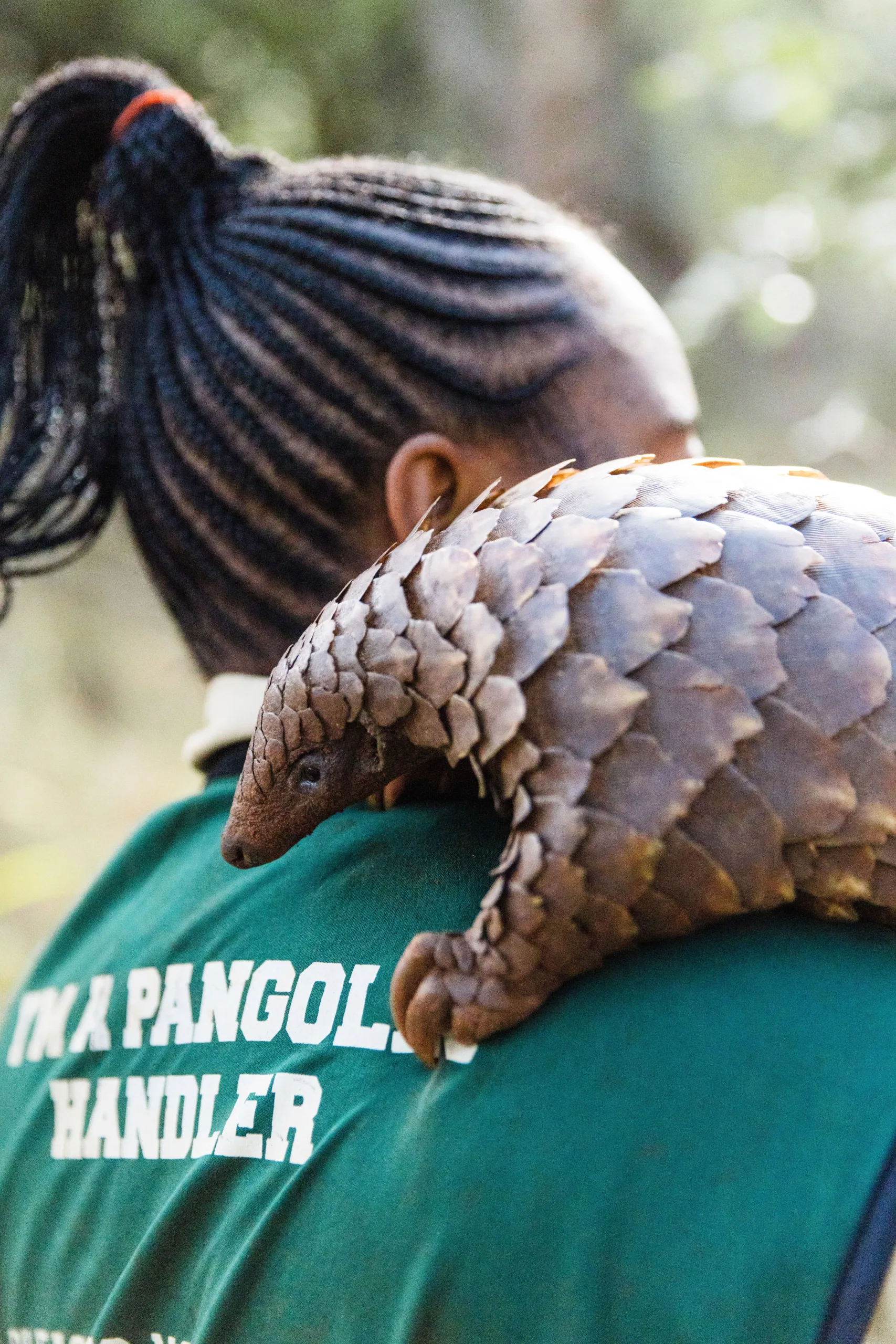By Salima Mvula
The first time Chitembo saw a pangolin, she stopped in her tracks. It was unlike anything she had ever encountered, with its body covered in overlapping scales that shimmered faintly in the light, almost like a fish pulled from the water. “I was shocked because I had never seen an animal on land with scales like a fish,” she recalls. That moment stayed with her, long after the pangolin curled up into its tight, armoured ball. She didn’t know it then, but this strange and gentle creature would change the course of her life.
Today, Chitembo is one of the dedicated pangolin keepers at the Department of National Parks and Wildlife – Wildlife Crime Prevention (DNPW-WCP) Pangolin Rehabilitation Centre in Zambia. Her work is not for the faint-hearted. It demands patience, strength, and an unwavering sense of care. Over the years, she has helped rehabilitate 60 pangolins, each with its own story of survival, each a small triumph against the odds.
Her days begin in darkness, before the first hint of sunrise. At 04:20 AM, the camp stirs quietly as she and the team prepare for the morning’s work. The first task is to weigh the pangolins, the metal scale swinging gently as each animal is lifted, their long tails curling in mid-air. A few minutes later, they head out into the field. By torchlight and the growing glow of dawn, the keepers guide the pangolins to forage for ants and termites, letting them dig and feed as they would in the wild. For three or four hours, Chitembo watches closely, noting which pangolins move with energy, which ones seem tired, which ones linger too long at a nest of termites.
By mid-morning, they return to camp, and the pangolins are weighed again before retreating to their places of rest. The keepers have their breakfast around 11:00, followed by the essential work of cooking, cleaning, and repairing whatever needs attention. Later, she sits with a notebook, recording the day’s observations and updating health records. Each detail matters: each number, each note could mean the difference between recovery and decline.
The evening mirrors the morning. The pangolins are taken out for a second feeding, their movements slower in the fading light, their scales catching the last warmth of the sun. By the time they are back in their resting places, the bush is alive with night sounds. Dinner for the keepers is quiet, eaten with the kind of tired satisfaction that comes from knowing your day mattered.
To Chitembo, pangolins are “innocent and gentle” animals, utterly defenceless against humans. It is this vulnerability that drives her. The best part of her work, she says, is the moment a pangolin is finally ready to return to the wild. Watching it disappear into the bush, free and strong again, is worth every long day and sleepless night. She dreams of a future where sixty-five per cent of the world’s pangolin population is still alive and thriving. And to those who make her work possible, she offers heartfelt thanks: “Rehabilitating pangolins gives them a second chance to live, and this helps us balance the ecosystem. Your helping hand goes a long way. It helps save the planet.”
Pangolins are the only mammals entirely covered in keratin scales, the same material as human fingernails. But those scales have made them one of the most trafficked mammals in the world, prized for misguided beliefs of traditional medicine and, in some cases, their meat. In Zambia, cases of pangolin trafficking have sharply increased in recent years. Many of the animals arrive at the centre weak, dehydrated, and disoriented, victims of neglect from people who simply did not know how to care for them. Releasing them immediately into the wild after rescue would be a death sentence. They need time, safety, and expert care before they can survive on their own again.
The DNPW-WCP Pangolin Rehabilitation Centre was born out of that need. Here, rescued pangolins, some so young they still rely on milk, are given a second chance. They are fed specialised diets, treated for injuries, and allowed to regain their strength before returning to their natural habitat. Since its creation, the centre has rescued and rehabilitated 127 pangolins, achieving an impressive eighty-two per cent survival rate one month after release. It is a record built on dedication, scientific monitoring, and countless hours in the field.
Yet, the work grows harder every year. Rescues are increasing faster than the number of trained keepers. Medical treatments and specialised food are expensive, and climate change is altering the pangolins’ natural diet in the wild. Shortages of staff, equipment, and security add to the strain.
Saving pangolins takes more than compassion; it takes resources. With greater support, the centre could provide even better care, expand its facilities, and ensure trained personnel are available for every new arrival. Every pangolin released is a victory, not just for conservation, but for the planet itself. And with the help of those who care, many more victories are still within reach.
You could become part of this victory by advocating and donating to this noble cause and helping the rehabilitation centre continue in this fight to save this elusive and gentle animal.
To save a pangolin today, scan the QR code.



0 Comments